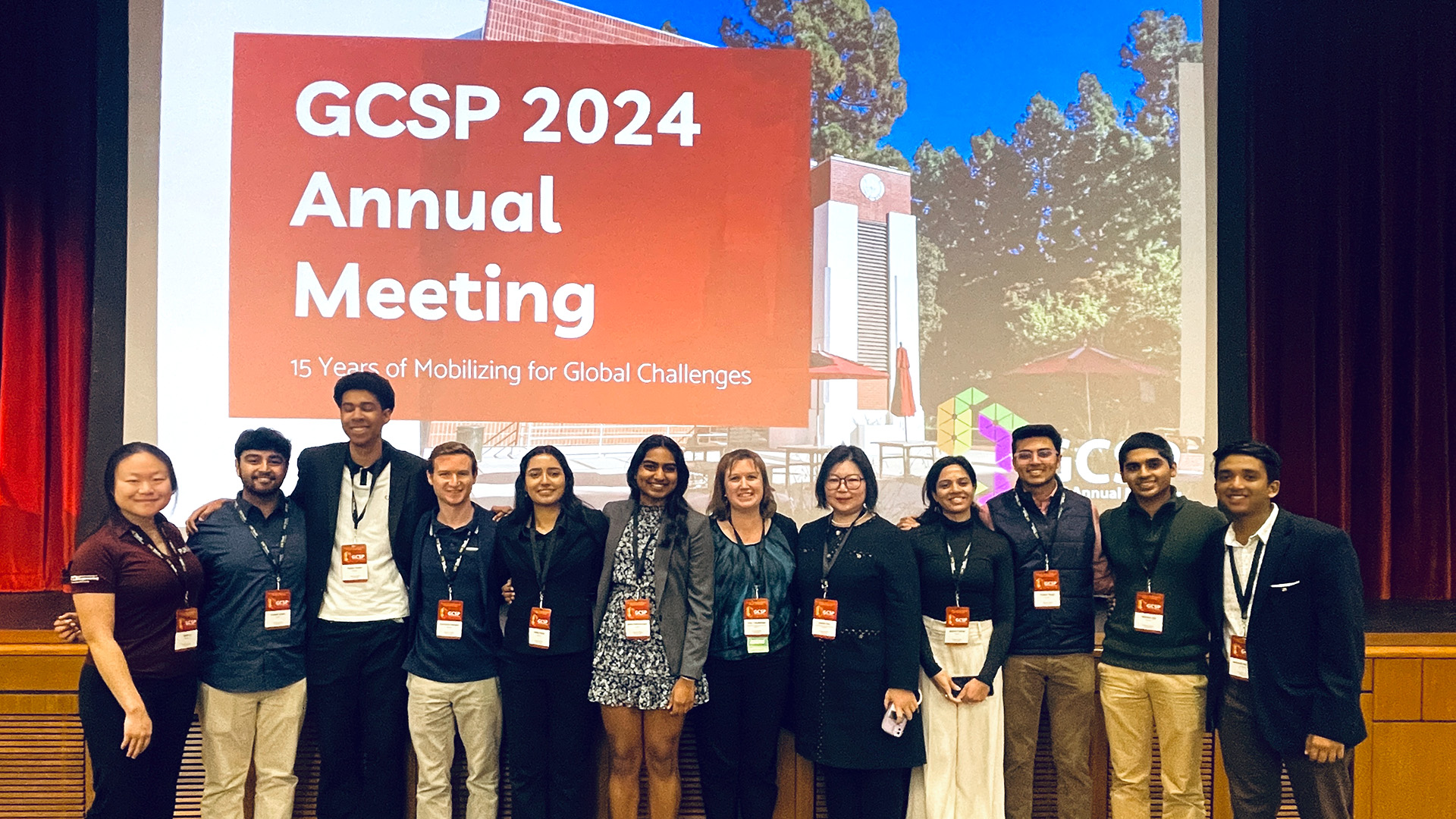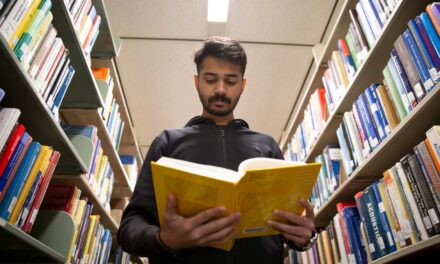
Networking across programs and pathways
10 ASU Grand Challenges Scholars attend the 15th GCSP Network Annual Meeting

Engineering education’s focus on teaching problem-solving skills and fostering creativity opens doors to a wide range of careers. However, this appealing variety of options can overwhelm students as they navigate which engineering fields to pursue.
The Grand Challenges Scholars Program, also known as GCSP, in the Ira A. Fulton Schools of Engineering at Arizona State University, guides engineering students through these skill-building experiences to prepare them to solve global challenges and have a positive impact on society.
GCSP encourages students to seek experiences beyond their curriculum in project development, working across disciplines, entrepreneurship, cultural awareness and social consciousness. With mentorship from faculty and staff throughout their undergraduate studies, students design their paths to master these skills.
Computer science senior Tushar Tyagi saw GCSP as a great way to get the most out of his education and decided to join.
“ASU is a very big community,” Tyagi says. “It was important to me to find a space that was smaller and academically focused. I found myself surrounded by a bunch of people doing great things who wanted to better themselves professionally.”
Every year, GCSP leaders at institutions around the world convene at the GCSP annual meeting to share knowledge, best practices and celebrate students’ accomplishments. In February, 10 ASU GCSP scholars were invited to attend the 15th GCSP Network Annual Meeting in Los Angeles, California.
Pathways for education
GCSP was developed by three engineering deans and endorsed by the National Academy of Engineering and has been implemented at more than 90 engineering schools worldwide. Amy Trowbridge, co-director of ASU’s Grand Challenges Scholars Program and an associate teaching professor in the Fulton Schools, says that the program is a customizable launching point for each student.
“Engineering is a vast field that attracts students with big ideas,” Trowbridge says. “They want to seize all these opportunities and make an impact. GCSP gives them structured opportunities and support to do everything they want to do during their education and encourages them to pursue additional acitivities they didn’t even know about.”
Haolin Zhu, an engineering associate teaching professor in the Fulton Schools and co-director of the program, agrees that the program attracts students who are passionate about getting more involved.
“Students want to do more than what their technical engineering degrees require,” Zhu says. “They want to develop the skills and mindsets that make them well-rounded engineers and better prepared for their future endeavors. GCSP is a great way to develop such skills and broadened mindsets.”
Navigating new networks
Among the opportunities available to GCSP scholars is the annual networking event, which brings together students, faculty, alumni and staff from across the globe to celebrate students’ accomplishments and experiences.
This year, students presented posters on their research and GCSP experiences, listened to keynote speakers, and attended workshops on storytelling, diverse perspectives, human-centered design and community.
Deepit Arora, an engineering robotics senior, says his time in GCSP was enriched by the company of like-minded people who are developing meaningful solutions to global issues.
“I got to have a lot of high-level conversations with people about robotics and how it can impact other fields like health care and education,” Arora says. “It opened my mind to new opportunities.”
Ten ASU students participated in the poster session and two of them were selected to speak in front of all the meeting attendees.
“I presented on my prosthetics project with Engineering Without Boarders, building 3D printing myoelectric prosthetics for children,” Arora says. “Prosthetics are expensive and hard to obtain in parts of the world, and kids grow out of them so fast. We are making it possible to make functional 3D-printed arms for a fraction of the price.”
Vaibhav Urs, a first-year computer science student, says he was surprised to be chosen to give a speech that focused on his experiences in the program and the Future Solutions project he did as part of the introductory GCSP course.
“I was aware my professors put a lot of trust in me, especially as a first-year student, to represent them,” Urs says.
“The way he delivered it was amazing,” Trowbridge says. “I was looking forward to seeing how Vaibhav presents himself and his experiences. He told a great story and I think it was valuable for others to hear his perspective.”
Future solutions
As graduating seniors, Tyagi and Arora expected the annual meeting to feel like the final chapter in their GCSP journey, but their perspectives have continued to change and evolve.
“I hadn’t realized how big GCSP was or how many ideas it has inspired,” Tyagi admits. “It was a powerful moment to look back on my education and see how much more I did than just fulfilling a list of competencies. Standing there among hundreds of people doing important work shifted my mindset.”
Arora found himself sharing perspectives and advice with newer students about how to get the most out of their experience, encouraging them not to treat the GCSP requirements as just checklist items, but rather as opportunities to learn more about human communication and empathy.
“Those skills are critical to success as you step into the industry and start building something that helps others,” Arora says. “Having experience in service learning and communicating with people from other cultures can take your career further.”
Urs is eager to continue forward in the program and has been inspired to submit his business idea to Venture Devils, an ASU program that helps develop startups.
“I’m already reaping the benefits of GCSP,” Urs says. “The program opened my eyes to research possibilities and helped me understand how far I can take my ideas.”



































